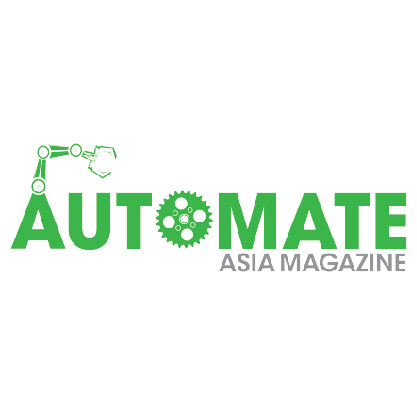The IoT Revolution: Shaping the Future of Business
- Automate Asia Magazine

- Jan 29, 2024
- 4 min read
IoT extends beyond connected devices, serving as powerful tools to address global challenges like climate change and disease management. From tracking infections and controlling soil moisture to monitoring traffic and air quality in smart cities, IoT transforms industries. I will explore current IoT applications, challenges and successful implementation strategies across sectors.
How Industries Are Using IoT Devices To Gain Competitive Edge
IoT is most commonly used in the following industries.
Travel
The travel industry was quick to adopt IoT, actively contributing to what is often talked about as "smart tourism." Big hotel brands like Hilton and Marriott are using IoT devices to control room temperature and lighting in the guest rooms. Airports like Amsterdam Schiphol, Singapore Changi and Dubai leverage IoT devices to track passenger and luggage movement across the airport.
Additionally, big airlines leverage IoT sensors to track engine performance, vibration levels and fuel metrics so that any problems with aircraft can be determined in advance. Smart luggage trackers like Apple AirTag, Tile, Samsung Galaxy SmartTag and LugLoc can be attached to luggage to monitor its location.
Agriculture
Often referred to on the web as "precision agriculture" or "connected farming," IoT has transformed agriculture by making crop cultivation more explicit and data-driven. Using detailed maps of the land, farmers can distribute water and fertilizers exactly where they are needed. For example, John Deere embeds IoT sensors in their tractors, harvesters and planters, which collect data on crop health and equipment performance. CropX gathers farm data and produces recommendations about irrigation and nutrients for crops.
Supply Chain And Logistics
IoT devices have a profound impact on the supply chain. For instance, Walmart, Amazon and Kroger are using smart shelves and pallets with IoT sensors to track stock levels in real time, sending notifications when they need to be refilled. The modernization doesn’t end here: Smart shelves integrated into the automated systems reorder stock according to need. One more example is Amazon Go, the cashier-less stores that use IoT sensors and cameras to track the items that shoppers pick. Shoppers can simply walk out of the store without scanning any items.
Manufacturing
The IoT in manufacturing gave rise to the Industrial Internet of Things (IIoT). IoT devices predict equipment failures by gathering equipment parameters that are later analyzed by machine learning algorithms. For example, Rolls-Royce utilizes IoT along with AI to make predictions when a particular jet engine needs maintenance services.
Healthcare
IoT devices can monitor patient data, for example, blood sugar levels, heart rate and heart rhythm, and alert patients about their health conditions. Indeed, Apple is using data from the Apple Watch to detect atrial fibrillation, which can be a sign of a heart attack or stroke. IoT devices are greatly helping patients who have chronic illnesses and by reminding them to take pills on time.
The Other Side Of Connectivity: The Challenges Of IoT
As with any pioneering technology, IoT is not without its hurdles. Here are the biggest ones.
Security And Privacy Vulnerabilities: IoT devices might be prime targets for cyberattacks as they transmit vast amounts of personal information. For instance, according to the Federal Trade Commission regarding Ring, due to a lack of stringent privacy measures in 2019, "hackers continued to exploit account vulnerabilities to access stored videos, live video streams, and account profiles of approximately 55,000 U.S. customers."
Interoperability And Configuration: IoT systems comprise diverse devices with unique protocols, leading to a fragmented ecosystem. This poses challenges in communication among devices, such as huge factories using different protocols, hindering seamless data collection and analysis for informed decision-making.
Real-Time Processing: Autonomous vehicles use real-time information from sensors so they can avoid collisions and navigate safely. However, the sheer volume of this data and its high velocity necessitates the data processing to be done at the edge (on the vehicle itself), rather than being sent to the servers. This requires expansive on-board computers and robust algorithms working without fault.
Data Unification: IoT sensors generate heterogeneous data that is unstructured and in different formats. Moreover, the relationships between the data points are constantly evolving, which necessitates the integration of machine learning or AI techniques, which might be costly and time-consuming to implement and require deep expertise.
Cost: Deploying a large-scale IoT network requires investment in various IoT devices and sensors. Moreover, taking into account the amount of data generated by IoT, companies have to purchase data processing and storage infrastructure.
IoT: A Key To Business Success
Implementing IoT in your business necessitates a strategic approach. Here are sample questions you can ask yourself before integrating IoT into your business.
Identifying A Clear Use Case: What do you plan to achieve with IoT? Which specific issues are you looking to resolve? What are your priorities? Beyond determining goals and objectives, it is useful to conduct market research and talk with stakeholders to future-proof the solution.
Assessing Your Current Systems: Are existing systems ready to support IoT technology? Can it handle the IoT volume and latency demands of IoT applications?
Focusing On Security: Are your security protocols strong enough to prevent unauthorized access to IoT devices and data? Are there encryption and multifactor authentication mechanisms in place?
Data Management: Does your company have the necessary tools and expertise to derive actionable insights from IoT data? Can these data be used to improve current product offerings?
Continuous Improvement: How do you improve the performance of existing IoT solutions? How will the potential issues be addressed? How quickly can you implement corrective actions?
The successful enterprises of tomorrow will not just be those that adopt IoT but also those that integrate it at the very heart of their vision and strategy, heralding a future where technology and human ambition walk hand in hand.
Roman Reznikov is a VP of Delivery at Intellias, Roman advises expertise to help businesses orchestrate their best products and services.





-01.jpg)




